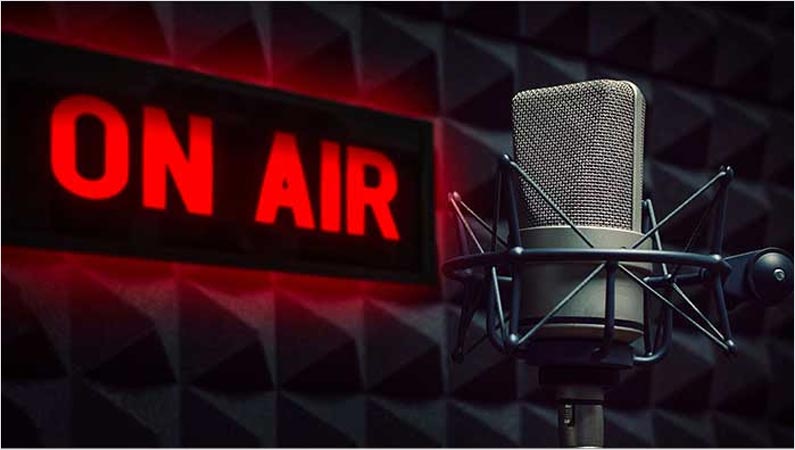Why the radio sector is upbeat about the upcoming festivities
Leading FM radio players talk about changing advertiser demands, innovative IPs, ad cost challenges and more as they look forward to the festive season
Leading FM radio players talk about changing advertiser demands, innovative IPs, ad cost challenges and more as they look forward to the festive season

The upcoming festive season has brought cheer to every sector, and FM radio is no different. It's a time when radio stations often experience increased listenership and engagement.
Industry players seem optimistic this year as well. For instance, Fever Network announced an advertiser price hike of 25 per cent across all its radio brands, comprising four distinct radio stations – Fever 104 FM, Punjabi Fever, Radio Nasha and Radio One. Other stations like RED FM and Radio City announced campaigns to amplify their listenership with ‘Quiz India Movement’ and ‘Touch Me Not Campaign’.
Abe Thomas, CEO of Reliance Broadcast Network (which owns Big FM) shared, “After the success of our campaign last year, we have a festive bonanza planned for our listeners as we look forward to its second season. Taking the initiative a notch higher, this year we have added innovations in the form of gamification of the entire user experience.”
The radio broadcaster’s objective is to emphasise delivering value to advertisers and not just product discounts. They are looking at attaining this by creating campaigns specifically designed for the festive season that can incentivise advertisers to increase their spending. These campaigns can leverage the holiday spirit and consumer sentiment, leading to higher engagement and conversions, according to the executive.
My FM is looking forward to customised solutions for brands that are fuelling their growth and helping them convert business faster. “Our solutions are also getting good recognition not just by brands but also by the government,” said Rahul Namjoshi, CEO, My FM.
Ashit Kukian, CEO, Radio City believes the festive season entails numerous opportunities for revenue generation. The purchasing power of consumers has been steadily rising and is expected to continue its upward trajectory. “Our strategy involves optimising revenue streams to capitalise on the festive season while maintaining a balance that avoids overwhelming listeners with excessive advertising.”
An upsurge in demand
Post the pandemic, even though the Radio sector saw muted growth, it never experienced a negative development. Statista stated that despite the adverse industry-wide impact of the coronavirus pandemic, the radio sector's value reflected a growing trend. According to MIB’s statistical handbook of 2023 as well, there were 388 private FM Radio stations in 2022. In 2019, there were 383.
The Radio City spokesperson highlighted that advertiser demands have evolved over time, particularly during peak seasons like elections and the festive period. Advertisers now expect to leverage the season and festive spirit to enhance consumer engagement and conversion rates.
This year, there has been an upsurge in demand and acceptance for on-ground and digital campaigns. Offline events have made a resurgence, returning to pre-COVID levels, according to Thomas. Another trend that is gaining momentum is the seamless confluence of IPs, campaigns and gamification. Thereby, making it an interactive and immersive experience.
A fragmented industry
In the FM Radio sector, some key issues remain unresolved. The M&E report by EY stated that radio measurement remains restricted to a few cities and hence, the ability to demonstrate reach and listenership remains low.
Further, several top-end smartphones have not incorporated an FM radio receiver or the chipset, impacting reach. In addition, there is no clear path forward for the implementation of digital radio in a manner that protects the interests of all stakeholders.
My FM’s Namjoshi opines that the industry is fragmented and doesn’t want to come together for rate correction. During Covid, the operation got slashed and now it’s time all industry players move towards charging the right price but currently, cutting is happening which is hampering the growth of the category.
The overlap of the World Cup and elections in certain parts of the country and Diwali falling in the same period is another big challenge as per Thomas. “The convergence of these major events during the most sought-after time of the year has posed a huge challenge of managing inventories, leading to potential market cannibalisation with increased demand and competition. With advertisers vying for airtime and promotional slots, maintaining a fair distribution becomes a complex task.”
Kukian said, “One of the primary challenges is striking a balance between advertising and entertainment content. Failing to find this equilibrium can have significant repercussions, potentially leading to a loss of listenership.”
He added, “Another challenge is the ad costs. The festive and election seasons witness a surge in advertisers. This heightened competition can drive up advertising costs, making it challenging for smaller brands to secure premium ad slots.”
As a solution, Kukian suggested radio stations must provide engaging and entertaining content while fulfilling their advertising commitments. Radio stations must have a deep understanding of their target audience during these periods. Moreover, Since the election season is also coming up, they must navigate the intricate landscape of political sensitivities. The challenge is to provide unbiased information and maintain a neutral and unbiased stance in their reporting and discussions.
Nevertheless, experts have forecasted the sector to grow at a compound annual growth rate of seven nine per cent, with its value increasing to 26 billion Indian rupees by 2025. The industry players with their podcasts, and gamified content and the government, via their futuristic regulations, are both working towards the revival of the magic of FM in India.